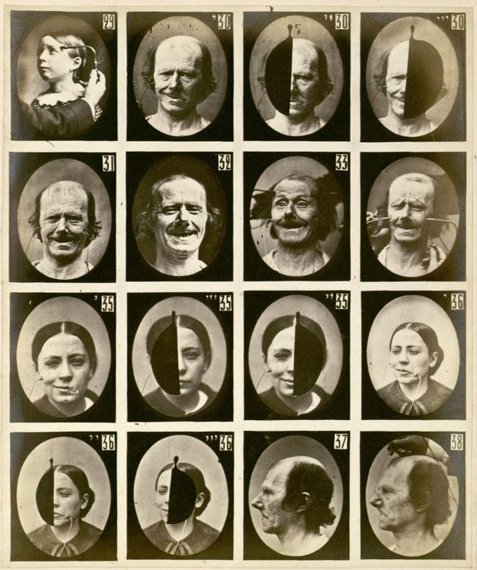I was recently asked to write an article on detecting deception for Pursuit Magazine. Despite the fact that I was well versed on the literature, I decided to ask three renowned scholars this question: "how do you catch a liar?" The scholars were Caroline Keating of Colgate University, David Matsumoto of San Francisco State University, and Aldert Vrij from the University of Portsmouth (U.K). Here's what I deduced from their advice:
1.Throw away any notion that a particular sign or behavior is indicative of deception.
Most popular books on nonverbal behavior have little basis in psychological research. There is no evidence that liars avert their gaze; in fact, quite the opposite may be true because liars try harder to convince. Nor is there evidence that fidgeting or self-touching (e.g. stroking one's own hair) is indicative of deception. Early books on police interrogation made claims that these behaviors indicated deception but modern research on the matter doesn't support the claim. In fact, in one study participants were given training in detecting deception based on police manuals and their performance at detecting deceit actually declined while they simultaneously reported increased confidence in their abilities.
2.Look for anomalous behavior but measure it against the person's own nature.
Anxiety and emotional seepage can give away deception but people respond to stimuli in different ways; some are easily aroused or naturally anxious. Because liars know that anxiety can give them away, they will try harder to control their behaviors and therefore overly constrained or reserved behavior can be more indicative of deception than apparent nervousness. The problem for lie-catchers is that some people are naturally restrained just as some are naturally anxious. The solution is to establish the person's "baseline behavior" -- their natural behavior under given circumstance -- and make judgments on anomalous behaviors against the baseline. Therefore in order to detect deception in someone -- short of them providing contradictory statements or having evidence otherwise -- it's necessary to gauge how he or she responds to different stimuli under varying conditions.
3.Be non-confrontational and get the person to talk; ask for details.
Lying takes effort and creates a greater load on cognitive processing because the liar must deal with made up details vs. those that actually happened. For this reason lies are more likely to be vague and if details are encouraged then the liar risks the possibility of contradiction. Furthermore, details provide a means for verification. Therefore, if lying is suspected then the best first approach is to get the suspected liar feeling comfortable and then talking. After which the story should be examined for inconsistencies; if incongruences are found, then details can be checked for verification. Remember: a confrontational approach should be avoided because it will put the person on guard and make them extra-vigilant with what they reveal.
4.Use evidence strategically when confronting a liar.
A new interview technique called SUE (strategic use of evidence) has police psychologists and deception researchers hopeful that interrogators can significantly increase their chances of detecting deception. There is one requirement for SUE to work -- evidence. The methodology of SUE is to begin with a non-confrontational interview and then introduce evidence late in the confrontation. This method allows liars to elaborate a story under the assumption that it's believed. If contradictory evidence is introduced after a fictitious story, the liar then has to account for the evidence, which increases the probability that they will be forced to contradict themselves. Experiments have showed that SUE increases interviewee's abilities of detecting deception to about 85 percent vs. 55 percent for control groups. Another SUE technique is to vaguely hint at the evidence (again, late in the confrontation) and gradually reveal the specificity of it; such approach forces the liar to speculate with increasing uncertainty that the truth may already be known.
5.Learn to read micro-expressions.
Charles Darwin believed emotions were universal but some anthropologists have argued that the expression of emotion is culturally mediated (learned). In 1966 a couple of psychologists documented brief involuntary expressions that lasted a fraction of a second that they proposed correlated to specific emotions. Psychologists Paul Ekman and Wallace Friesen later demonstrated that members of a remote Papua New Guinea tribe were able to accurately identify the correlating emotions of pictures of westerners displaying various micro-expressions. David Matsumoto further established the validity of the proposition that micro-expressions are universal by demonstrating that they occur in blind people.
Micro expressions are essentially involuntary expressions that last a fraction of second and reveal a person's true emotions. Though they occur only briefly Matsumoto insists that people can be trained to recognize them in real time. There is one conundrum--there is no micro-expression that is specific to lying. The emotions revealed by micro expressions are primitive and basic: sadness, anger, fear, contempt, disgust, and amusement. Thus, micro-expressions can reveal a discrepancy between how a person presents him or herself and how he or she actually feels.
For a more in-depth discussion of the topic, please see my article, Deception Detection for Interviewers, in Pursuit Magazine.
